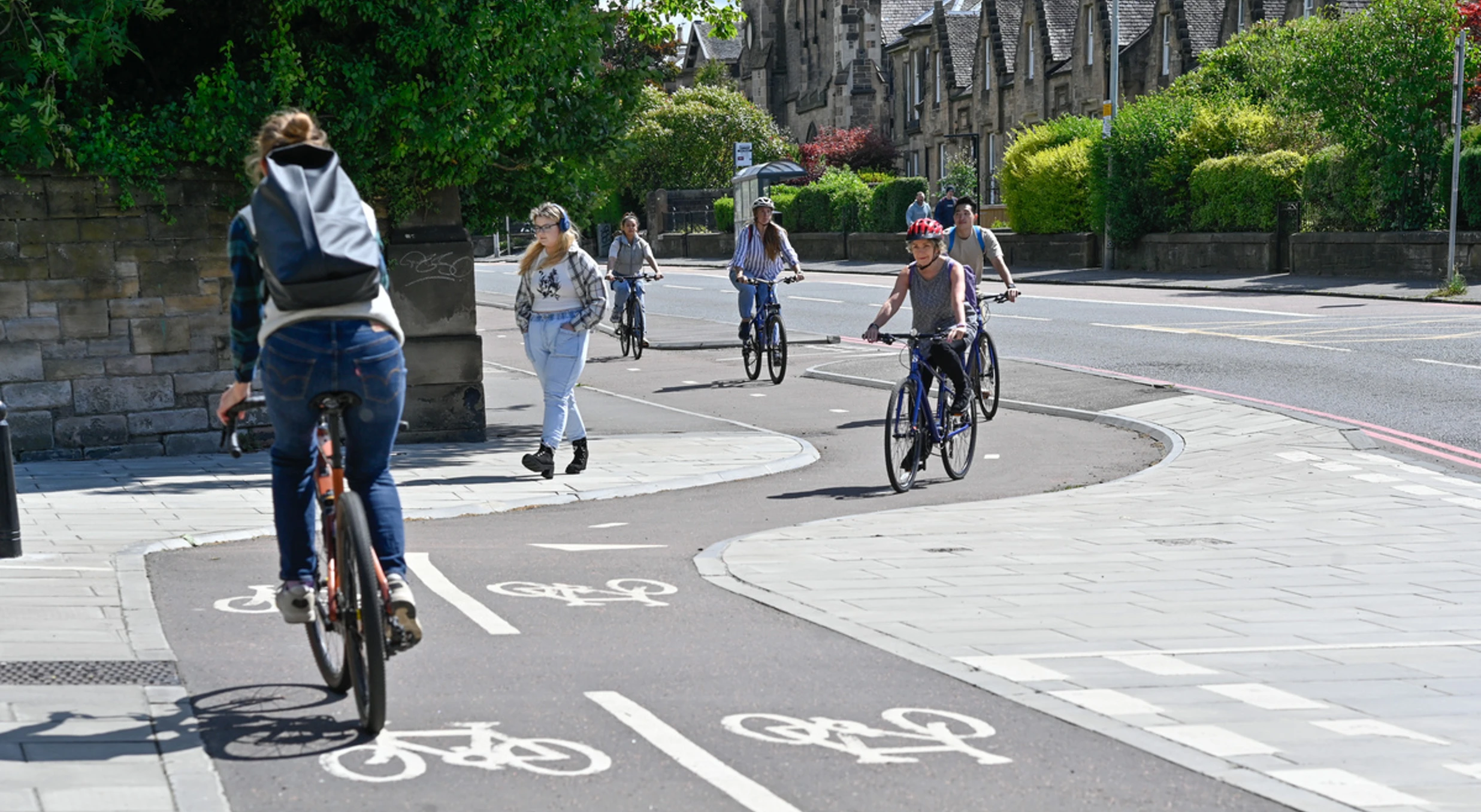-
Irvine's Shewalton Road sees 95% growth in the number of people cycling over the first three months of 2025 vs the same period in 2024
-
Bankhead Road in Kilwinning saw 34% growth in the number of people cycling over the same period
National cycle counter data has revealed growth in the number of people travelling by bike in Irvine and Kilwinning. It’s among 34 locations across Scotland seeing increases of over 30% in the number of cycle journeys in winter 2024-25 compared with the previous year.
Shewalton Road in the south of Irvine, saw 1,734 cycle journeys in January, February and March 2025, compared to 888 cycle journeys in the same period in 2024 – a 95% increase.
Another nearby cycle counter at the Shewalton Road footbridge over the A78, saw a 58% increase over the same period – indicating a significant rise in cycling on this route, as more people commute by bike to and from Irvine Centre. The Ayr Road (A737) corridor from Gailes junction to Heatherhouse Road had a significant upgrade in 2023, with a quality shared use path being created on the west side of the road.

In Kilwinning, a 34% increase in the number of cycle journeys was recorded on the shared path running through Almswall Park at Bankhead Road. This is part of National Cycling Network Route 7 which passes through the centre of Kilwinning and connects to other towns in North Ayrshire.
The increase in the number of bike journeys follows upgrades to this section of the cycling network in recent years, alongside improvements to the connection over the River Garnock into Eglinton Park – including clearing of overgrown vegetation, path widening and measures to prevent flooding of the path.
In addition to the growth in cycling, peaks at morning and evening commuting times at these locations indicate that people are predominantly travelling by bike for everyday journeys, like commuting to and from work.
Significant year-on-year increases in cycling were observed at urban and rural locations in Aberdeen, Aberdeenshire, Clackmannanshire, East Dunbartonshire, East Lothian, Edinburgh, Glasgow, the Highlands, Inverclyde, Moray, North Ayrshire, North Lanarkshire, Perth and Kinross, South Lanarkshire and Stirling.
Data was captured through more than 800 automatic cycle counters managed by Cycling Scotland, local authorities and partner organisations.
A spokesperson for North Ayrshire Council, said: “North Ayrshire Council’s Travel Smart team warmly welcomes the encouraging rise in everyday cycling across Irvine and Kilwinning. With support from our partners the Scottish Government, Transport Scotland, Strathclyde Partnership for Transport and Sustrans, the Council remains committed to enhancing the active travel network and making walking, wheeling and cycling safer and more accessible for all. To complement this the Council’s Travel Smart team also offers cycle training, led rides and hands-on bike maintenance sessions to build confidence and inspire more people to enjoy cycling as part of their daily travel routine.”
Nick Montgomery, Monitoring and Development Manager at Cycling Scotland, said: “To see significant winter to winter increases in cycling is very promising, especially as the growth is close to locations that have seen improvements for cycling in recent years. The peaks in cycling recorded during morning and evening rush hours also show that people are using these routes to get around by bike for everyday journeys, such as travelling to and from work.”
“What we see from the data is that where local authorities are investing in protected cycle lanes and improved networks of cycling routes, there are big increases in people travelling by bike. Future improvements would support even more people to benefit from cycling as a healthy, affordable, and environmentally friendly way of getting around.”
Map of locations to see increases of over 30% in the number of cycle journeys in winter 2024-25 compared with the previous year
Explanation of methodology:
- The findings follow a comparative analysis of data from more than 800 automatic cycle counters covering all 32 Scottish local authorities across Scotland, including 100 counters managed by Cycling Scotland through the National Monitoring Framework. Cycle counts from January, February and March 2024 were compared with counts from the same period in 2025, to identify locations seeing significant increases in cycling from one winter to the next. Data from February 29th 2024 was excluded to ensure that each time period had equal number of days to allow for a comparative analysis.
- Further data on cycle rates in Scotland can be found on the Cycling Open Data portal.

